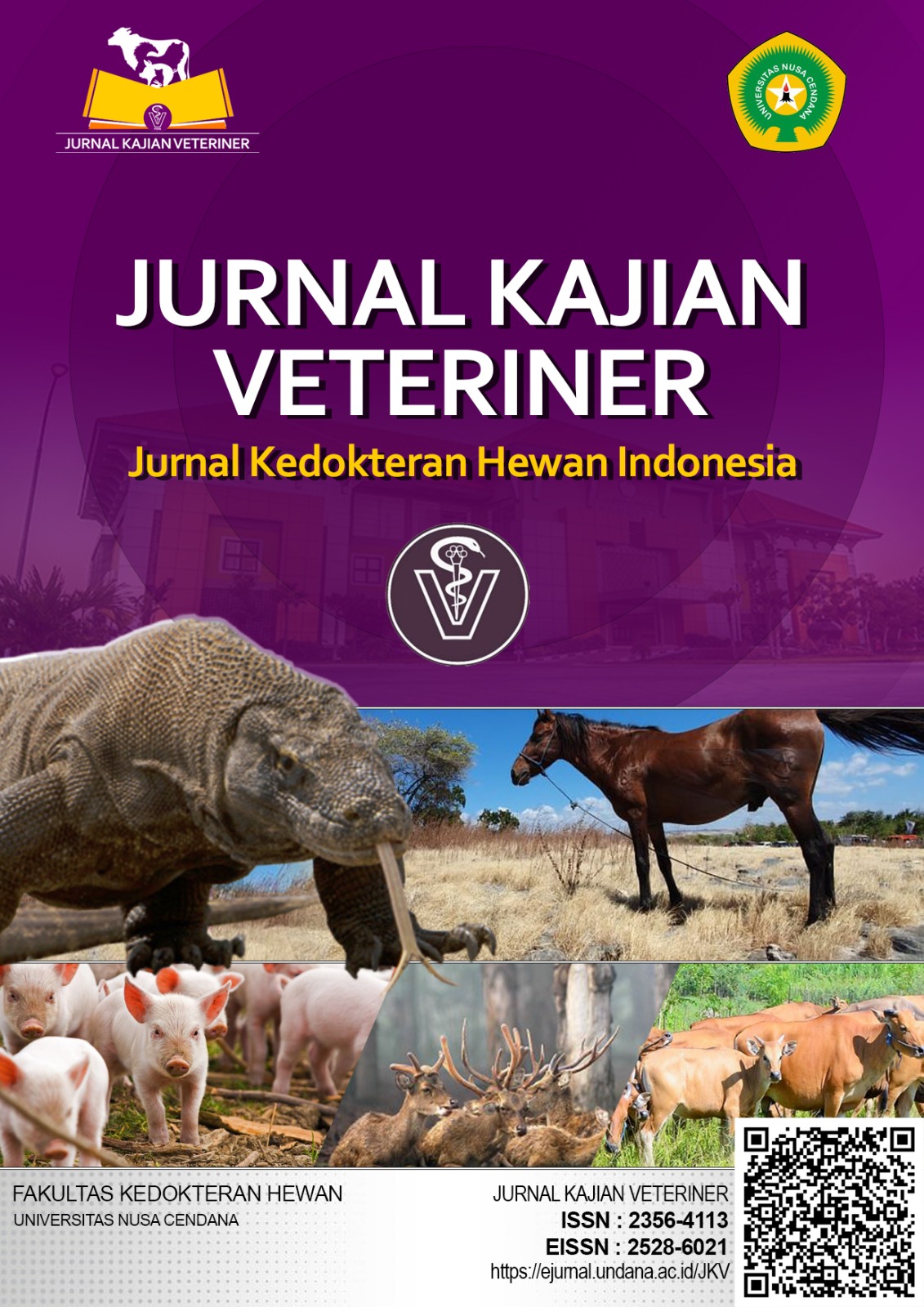Strategi Pengembangan Usaha Ternak Kerbau di Kabupaten Sumba Timur
Buffalo Livestock Business Development Strategy in East Sumba Regency
Abstract
Buffalo livestock in the culture of the people of East Sumba have a large role, both as working livestock, social and cultural livestock such as traditional mourning events, weddings and traditional houses. However, the government's role in developing the buffalo farming business is very low and the lack of development by breeders causes a decline in buffalo livestock productivity, resulting in a decline in population and an impact on fluctuating buffalo livestock prices. This research aims to: (1) develop a strategy for developing the buffalo population in East Sumba Regency. This research uses SWOT analysis to formulate a strategy for developing a buffalo livestock business. This research uses a survey method and purposive sampling with the minimum criteria of having three buffalo, having sold livestock in the last two years and being a fairly influential figure in the village. Primary and secondary data are used to answer the objectives of this research. The results of the SWOT analysis show that the buffalo farming business is in quadrant I with an X value = 0.16 and a Y value = 0.52. The strategy used is an aggressive strategy. The strategy for developing buffalo livestock is optimizing pastures by using feed processing technology so that feed is always available and increasing the production and productivity of buffalo livestock to maintain the availability and demand for buffalo livestock.
Downloads
References
Afrawati, A., Saam, Z., & Tarumun, S. 2014. Analisis Budaya Pekandangan : Sistem Beternak Kerbau Berkelanjutan di Kecamatan Cerenti dan Singingi Kabupaten Kuantan Singingi. Dinamika Lingkungan Indonesia, 1(2), 130. https://doi.org/10.31258/dli.1.2.p.130-145
Ahmad, R., Luruk, M. Y., & Lole, U. R. 2020. Strategi Pengembangan Ternak Kerbau Di Kabupaten Manggarai Barat. Jurnal Agribisnis Terpadu, 13(2), 222. https://doi.org/10.33512/jat.v13i2.9868
Fasih Khan, R. B. 2023. Pembuatan Pakan Silase Untuk Ternak Ruminansia di Peternakan Desa Pait Kecamatan Kasembon Kabupaten Malang. Fordicate, 2(2), 101–108. https://doi.org/10.35957/fordicate.v2i2.4743
Rangkuti, Freddy. 2017. Teknik Membedah Kasus Bisnis Analisis SWOT. Jakarta : PT.Gramedia Pustaka Utama.
Praharani, L., Juarini, E., Talib, C., & Ashari. 2010. Perkembangan Populasi Dan Strategi Pengembangan Ternak Kerbsu. Wartazoa, 20(3), 119–129.
Rusdiana, S., Talib, C., & Anggraini, A. 2020. Dukungan dan Penguatan Peternak dalam Usaha Ternak Kerbau di Provinsi Banten. Forum penelitian Agro Ekonomi, 37(2), 95. https://doi.org/10.21082/fae.v37n2.2019.95-114
Sitindaon, S. H. 2013. Inventarisasi Potensi Bahan Pakan Ternak Ruminansia Di Provinsi Riau. Jurnal Peternakan Vol Februari, 10(1), 18–23.
Wahyu Hadikristanto; Muhammad Suprayogi. 2019. SIGMA - Jurnal Teknologi Pelita Bangsa SIGMA - Jurnal Teknologi Pelita Bangsa. SIGMA - Jurnal Teknologi Pelita Bangsa 167, 10(September), 167–172.
Copyright (c) 2024 JURNAL KAJIAN VETERINER

This work is licensed under a Creative Commons Attribution-NonCommercial-NoDerivatives 4.0 International License.

 Bernardus A. Bulu(1*)
Bernardus A. Bulu(1*)








.png)


